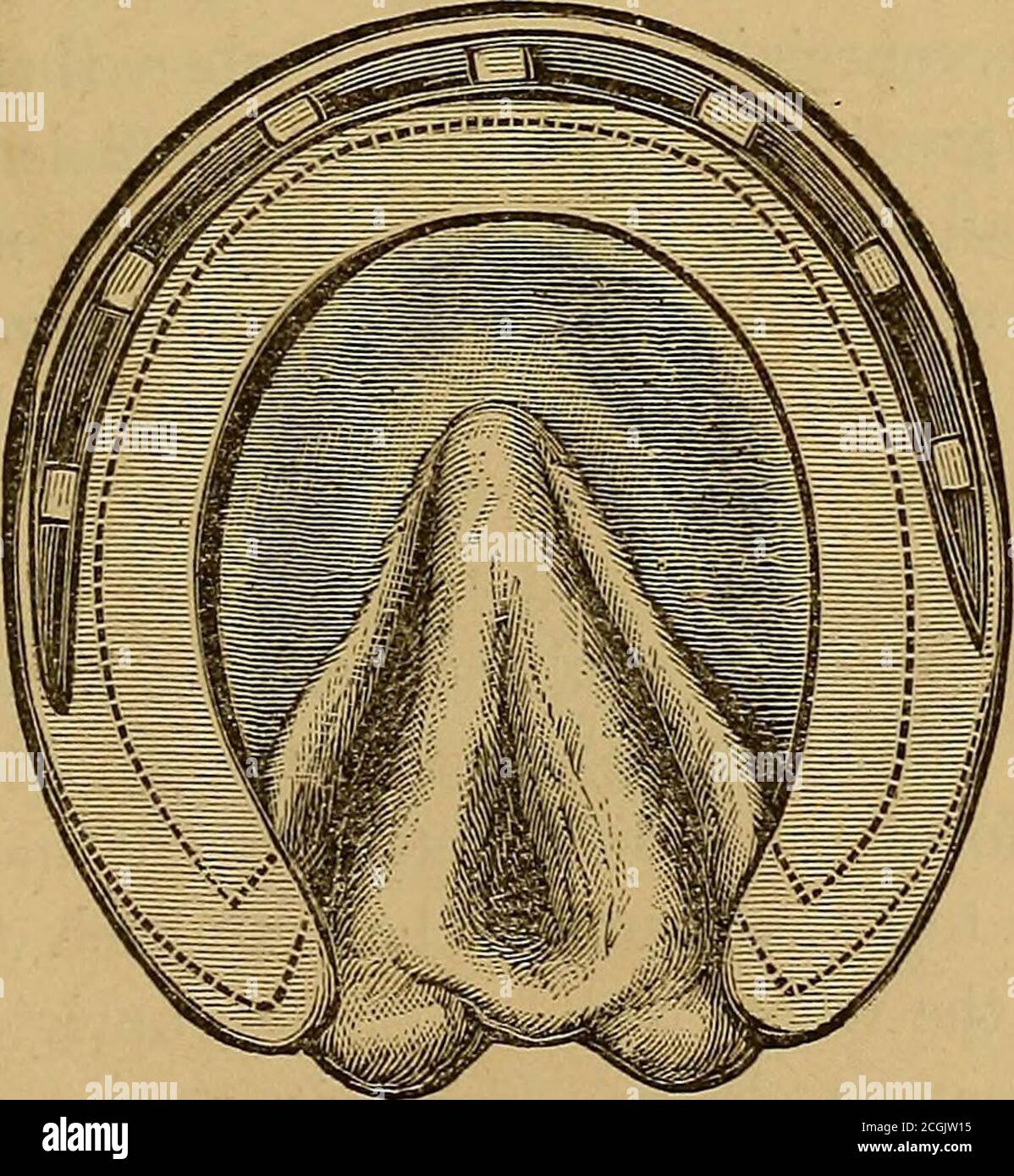. The art of taming and educating the horse .. . unded; if lia-ble to strike, then set close under the wall with ed: filed smooth. It is not the business t the writer to say what m struments should be u 1 for doing this, the buttre&^, drawing-knife, or rasp, or each alternately; theporat is to cut away or remove the surplus groAvth in the easiest and best manner, which depends more upon the deftness and ingenuity of the man than upon the use of any special means. The but-tress, in the hands of a manwho knows how to use it, can-not reasonably be objected to,next to which a good sharprasp is adv

Image details
Contributor:
Reading Room 2020 / Alamy Stock PhotoImage ID:
2CGJW15File size:
7.1 MB (529 KB Compressed download)Releases:
Model - no | Property - noDo I need a release?Dimensions:
1518 x 1646 px | 25.7 x 27.9 cm | 10.1 x 11 inches | 150dpiMore information:
This image is a public domain image, which means either that copyright has expired in the image or the copyright holder has waived their copyright. Alamy charges you a fee for access to the high resolution copy of the image.
This image could have imperfections as it’s either historical or reportage.
. The art of taming and educating the horse .. . unded; if lia-ble to strike, then set close under the wall with ed: filed smooth. It is not the business t the writer to say what m struments should be u 1 for doing this, the buttre&^, drawing-knife, or rasp, or each alternately; theporat is to cut away or remove the surplus groAvth in the easiest and best manner, which depends more upon the deftness and ingenuity of the man than upon the use of any special means. The but-tress, in the hands of a manwho knows how to use it, can-not reasonably be objected to, next to which a good sharprasp is advisable. The wallshould be reduced to nearly orquite on a level with the outermargin of the sole, providingthe sole has not been cut awaytoo much. As a rule, the lesstaken away from the foot thebetter, except for special rea-sons, which will be explainedhereafter. The bearing sur-face of the entire wall should be made level, so that an even beariuar surface of the shoe will rest upon it fully. The rasp should now be passed around the toe, to. Fig. 460. -An ordinary flat shoenailed on. 648 SHOEING. cut away the sharp edges and bring it to the size required. Prac-tically, this should be little more than rounding off the sharpedges of horn to prevent splitting. The principle is the same of leveling and preparing the feet ofhorses that have previously been shod. In such cases, to take ofi the shoe the best method is, after theclenches are cut off, to raise bothheels slightly with the pinceis, thenpry forward and across the foot a lit-tle, when the nails can be pulled outone by one. It is seriously objection-able, as generally done, to pull off theshoe by force, as the severe wrench-ing endangers tearing the hoof andstraining and injuring the foot. Thiswould be especially objectionable ifthe hoof be thin and the horse sensi-tive. Next, any stubs or nails shouldbe removed. While it is simply intended to paredown the wall to its natural form, ifit is thin and weak, growing but lit-tle,